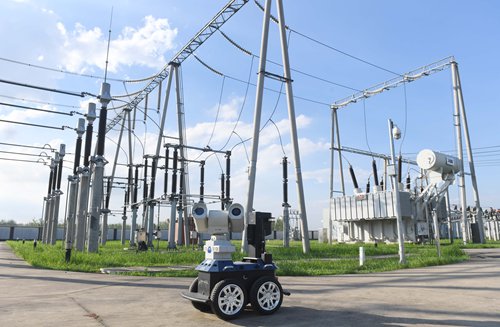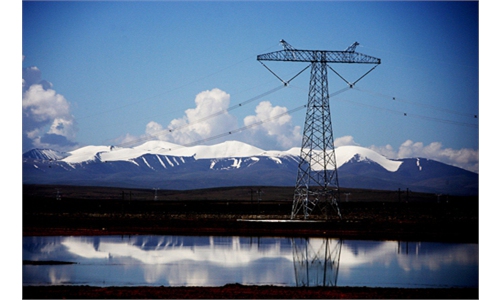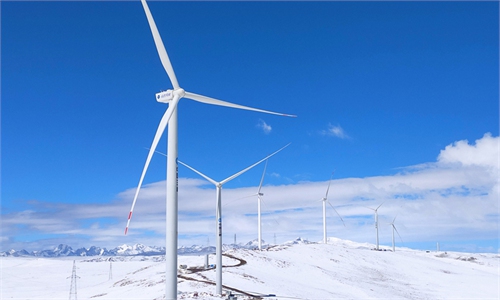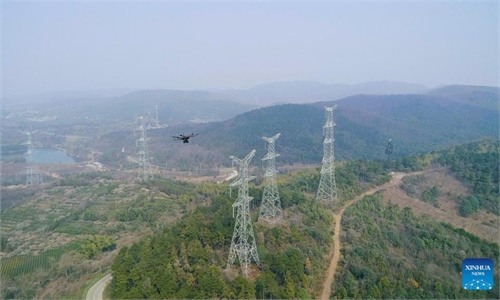
A WALL-E-like patrol robot conducts an inspection inside a power grid facility in Chuzhou, East China's Anhui Province on Tuesday. Equipped with a high-definition camera and infrared thermograph technology, the robot makes life easier for facility employees by checking grid equipment 24/7, especially in extreme weather conditions. The Chinese robots market will be worth $77 billion by 2022, according to a report released by the International Data Corp in August. Photo: VCG
The Electric Power Space Technology Company Ltd, affiliated to State Grid, announced on Friday that it has joined with the North China Electric Power University to achieve industrial application of artificial intelligence (AI) technology in ultra-high voltage (UHV) transmission lines' heat detection, marking the first time the new technology is used in China's power industry.The company and North China Electric Power University jointly developed an infrared defecting system, using AI technology to monitor and identify heat fluctuations, caused by transmission line faults.
The system is developed to safeguard stable operation of power grids during summer time, when electricity consumption reaches its peak.
By introducing AI technology to monitoring transmission lines, the measure can quickly identify fault points in infrared video images to detect any defects, and assist operation and maintenance personnel to eliminate hidden risks which cause power outages.
The new AI-assisted system can significantly reduce manual workload, and is faster and more accurate than previous detection methods.
The technology support team used minimized annotation, stepped machine learning and interference shielding to help the monitoring accuracy rate of electricity transmission lines to more than 90 percent, said Guo Xiaobing, director of the inspection department of the company.
Global Times



